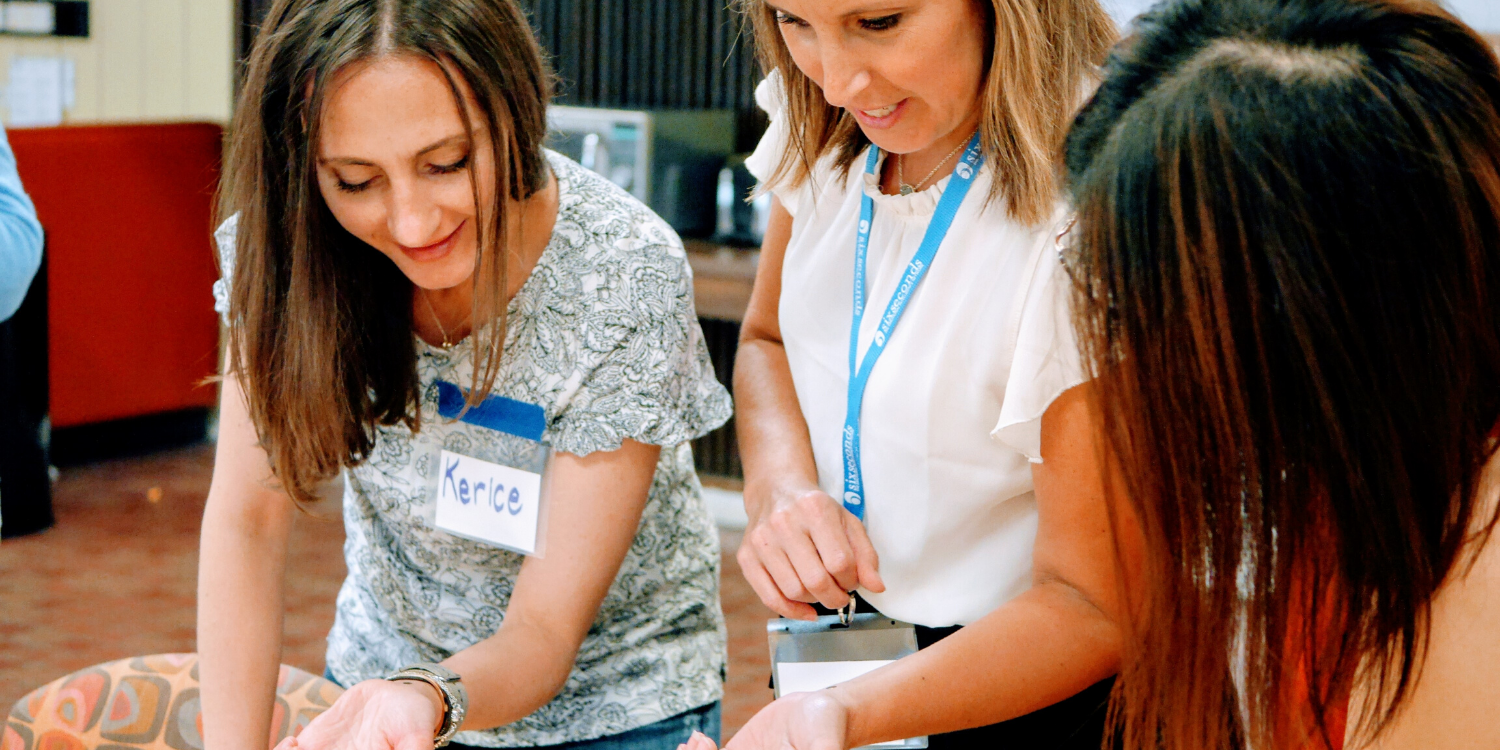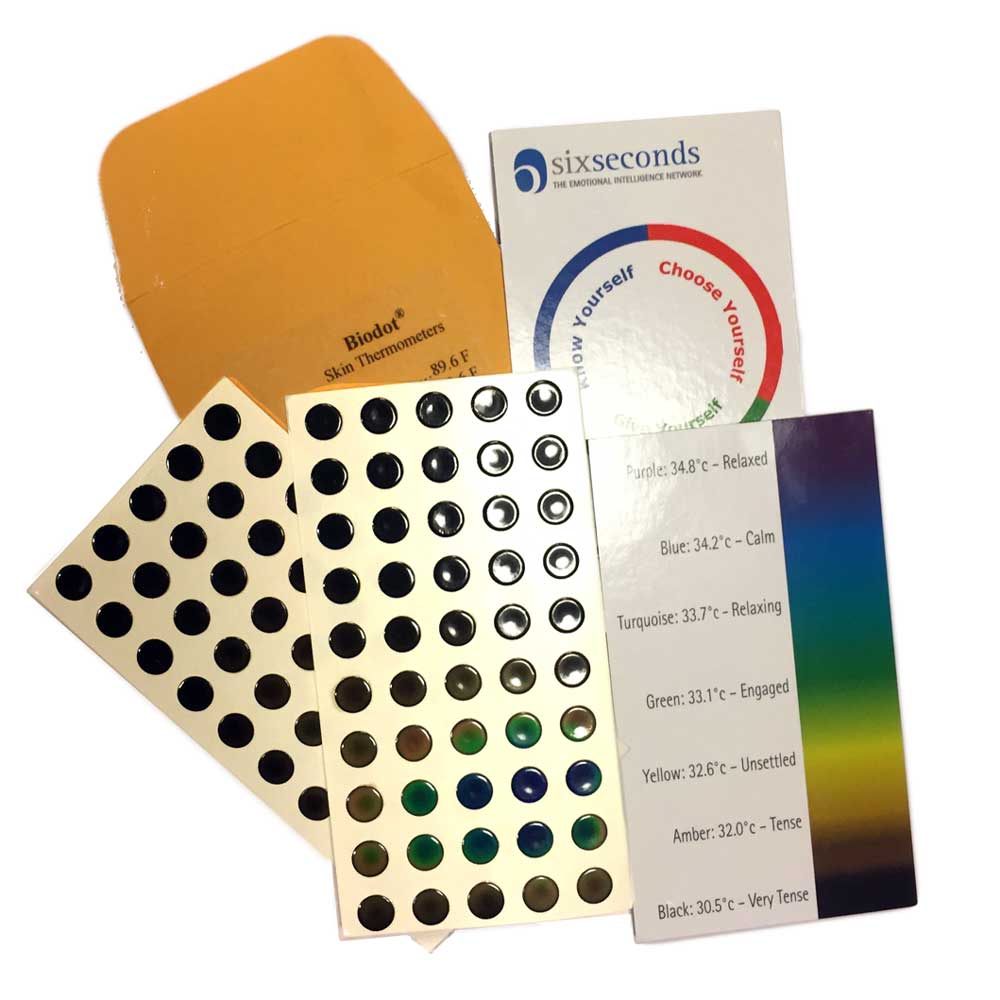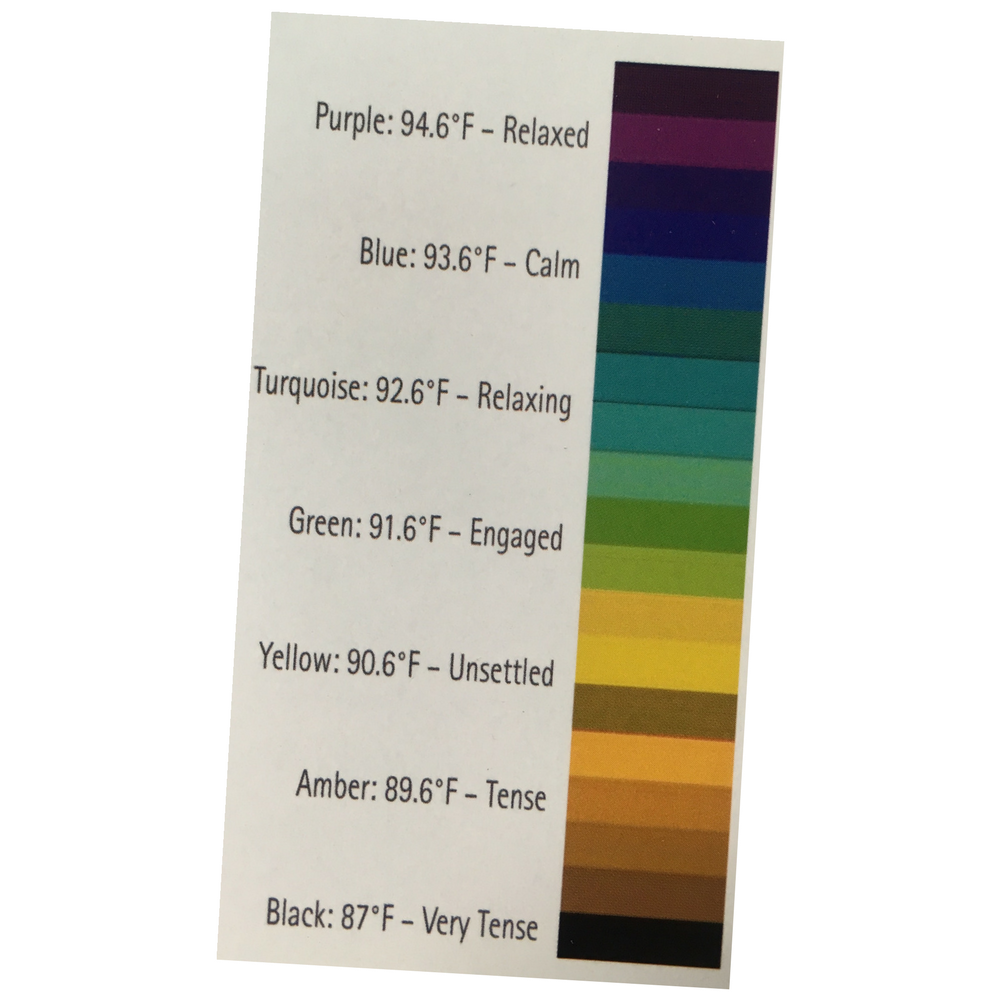What Are Biodots and How Do You Use Them with Clients to Enhance Training, Coaching, Meetings or Classes?
Biodots are a low-cost, easy way to help your clients become more self-aware. In this article, we’ll break down how they work and how you can use them to achieve 3 training objectives.
By Michael Miller – February 19th, 2020

Emotional self-awareness is a super power… but sometimes it’s hard to know what you’re feeling. Since emotions are connected to our physical responses, our bodies can give us clues. When we’re stressed, for example, our bodies automatically change the way blood flows, keeping more blood in our core areas and less on the surface… which reduces our skin temperature. This is an example of what some people call the “mind-body” connection — emotions and thoughts change our physical reactions! While these changes can be subtle, Biodots measure those temperature changes and give us real-time feedback.
In short, why use Biodots? They are a low-cost, easy way to help your clients become more self-aware. In this article, we’ll break down what Biodots are, how they work, and how you can use them to engage clients.
What Are Biodots?
Biodots are small dots that stick to your hand and reflect your body temperature as a spectrum of colors. Similar to the idea of a mood ring, except Biodots are scientifically calibrated.


How Do Biodots Work?
Skin temperature changes based on stress level. Biodots measure skin temperature. They change colors as your temperature changes – providing real time data to your stress level and how that is reflected in your physical body. The dots come with scale cards to interpret the different colors.
How to Use Biodots with Your Clients
At Six Seconds, we use Biodots in many of our courses to teach about emotional intelligence. Here are three examples:
Biodots to simplify neuroscience. Often when we present the physiological role of emotions, we explain why we’re called Six Seconds. Sometimes we share this quote from neuroscientist Antonio Damasio: “Emotions are embodied,” and then explain emotions affect every living cell in the human body to help us navigate life’s challenges and opportunities. Then we hand out Biodots to demonstrate this principle. Be careful though! Once you hand them out, people become very curious and want to play with their dots!
Biodots for emotional check-in. During a meeting or workshop, hand out Biodots and use them as a way for participants to gauge their present stress level, and keep tabs of their stress levels throughout the session or day. This works for both children and adults to increase self-awareness. For example, multiple times during your session, ask: “How many people have a dark blue Biodot?” “How many have a green dot?” etc. You can keep a scorecard on the whiteboard. Since green represents an optimal learning state, this is particularly useful if you want people engaged in content.
Use Biodots as a tool to practice relaxation and stress reduction. Biodots can help illustrate choice and control with emotional states. In a workshop or training, for example, pass out Biodots, then ask everyone to write or discuss a challenging or stressful topic, and then note down the color of their dots. Next, switch to taking deep breaths, increasing feelings of appreciation, and calming down (eg a mindfulness stress reduction exercise). Then ask them to note their dot-color. Discuss what changed and why.
How are you using Biodots in your training, coaching or teaching? Please share additional ideas in the comments!
What’s new in emotional intelligence?
Emotional Intelligence at Work: In the Era of AI, What Happens to Human Skills?
Who’s winning the artificial intelligence race: machines or people? Research finds AI investment leads to disinvestment in human skills
Fortifying the Mental Health of the Entire School Community with Emotional Intelligence
Wellbeing program at St. Peter’s Primary replenishes reserves post-COVID: ‘Truly life changing for many of our staff,’ school leaders say. Read the full case study here.
Helping Others Achieve Overall Well-being and Healthy Connections: How Emotional Intelligence Guided Pamela Barker’s Career Path Growth
Pamela Barker’s journey began with healing bodies, but it was her discovery of emotional intelligence that unlocked her true purpose: helping others achieve overall well-being and healthy connections. From her days as a physical therapist to becoming a passionate EQ coach, Pamela’s story is one of transformation, resilience, and the power of connection. Her experience shows that real change starts from within.
Emotional Intelligence at Work: Exploring the Principles of Exceptional Leaders
Check out these 7 valuable leadership lessons to be the best leader you can be and bring the best out of people.
How Emotional Intelligence Coaches Use Emotions in Goal Setting
Goal setting is central to coaching – but most coaches rush this process and take the surface answer as if it’s the client’s real goal. Here’s how emotions help get to the deeper goals.
Harnessing Emotional Intelligence: How Sara Canna Supports Employees and Transforms People’s Lives at the World Health Organization (WHO)
Emotional intelligence is more than just a buzzword—it’s a transformative tool that can reshape how we navigate challenges, build relationships, and thrive in demanding environments. Discover how Sara Canna brought EQ to the World Health Organization, empowering employees to manage change, stress, and personal growth.
- Pursue Noble Goals in the Six Seconds Model of EQ - July 29, 2023
- Increase Empathy in the Six Seconds Model of EQ - July 26, 2023
- Exercise Optimism - July 24, 2023







Hello, just found out about this product. I am a mental health counselor and I work with a lot of children so it seems like a fun way to measure stress levels for them. Also, I do EMDR work which requires my clients to be able to contact their emotions. As we look for trigger events, we measure the stress level to ascertain which events would potentially be the most effective for EMDR processing. One question that I do have is that if a person is a “cold” person, will they be as effective? You know, a person that always feels cold.
Hi Cynthia – they are thermometers so will read differently for someone whose baseline body temp is lower or who has circulatory challenges. Also some effect from ambient temp which can alter skin temp (super strong A/C for example). I usually tell people: if your body temp runs colder, try putting on your wrist instead.
—> in any case, extremity skin temp will vary w stress response, so should see some change.
Been following seconds for a while and it’s been interesting and this biodot can be used in the home( pointer to how parents ward relationship is) and in offices to know how conducive the work place is as well as ecological impacts working environment on staffs